The story of Stax Records is a very interesting and important story. It goes to the heart and soul of music, life and racial politics in the late 1950’s and early 60’s South. Bear with me and I will try to give you the important parts. I hope I can do the story justice.
Stax started in 1957 in a garage on East McLemore Avenue in Memphis, Tennessee. It was run by a brother and sister team, Jim Stewart and Estelle Axton (hence the eventual name “Stax”). It had very simple beginnings but soon started picking up some brilliant talent starting with Otis Redding. The “House” band was Booker T and The MG’s, a mixed race band. The label became known for “Black” music even though the owners and many performers were white. Stax was very proud of the fact that “there were no colors once you walked through the door. There were only people and talent”. Many of the groups they recorded and made famous were racially mixed groups and this fact alone helped break down the segregated society of the South. If you wanted to have a mixed group like Booker T And The MG’s, The Mar-Keys or the Memphis Horns play in your all white club, you had a problem. If your patrons demanded Otis Redding, you had a bigger problem. Clubs soon became integrated.
The Memphis Horns (Andrew Love, Wayne Jackson and Tom McGinley) were one white and two black performers. They spent so much time together they were like brothers. There was a Dairy Queen near the studio where they would stop to eat on the way home. This place had “Black” and “White” windows where you placed your orders. The white member of the group (I forget who he was) always stood in the “Black” line with his friends and it was only when he was threatened and abused by the rednecks that he remembered he was white. This was just the way it was with Stax. Inside the studio Dr. Martin Luther King’s “Dream” lived, far ahead of it’s time. Outside was a different world.
Stax always had an open door policy. They encouraged young people from their inner city neighborhood to drop in and meet the artists and if they thought they had any talent themselves, the studio was available. There is a map of the neighborhood area in the museum showing dots where many of the superstars Stax recorded lived. There were about ten of them within an eight or ten block radius of the studio and were discovered because of this policy.
The list of artists in the Stax family was breathtaking! Some of the names besides Otis Redding and Booker T And The MG’s were Rufus Thomas, Carla Thomas, Issac Hayes, Sam and Dave, Wilson Pickett, Little Milton, The Delfonics and the list goes on and on. They all considered themselves a family.
The end of Stax started with the killing of Dr. Martin Luther King just a couple of miles from their door. Suddenly there was a color difference in the community and “it was no longer cool to be white”. Riots were going on as the black community blamed the white community for the murder. Record sales plummeted and concerts were cancelled. This financial pressure following so close upon the death of their main star, Otis Redding, caused the company to close it’s doors for good. The building was sold to the Church Of God who, despite a petition campaign and neighbourhood protests, tore the studio down. All that remained was a plaque on the sidewalk in front of an empty lot.
Today the site is bustling. The old theatre next door is the museum and in the place where the Stax studio once stood is the new Stax Music Academy and the Soulsville Foundation which prepares the Inner City kids of the neighbourhood for college and gives them a love of music. Donations accepted. It is a crowded, happy place once again!
Here are some photos. The second last one is Issac Hayes gold plated Cadillac, complete with TV and refrigerator.

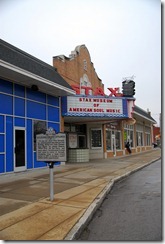
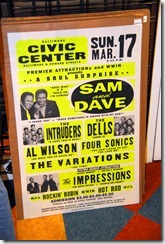

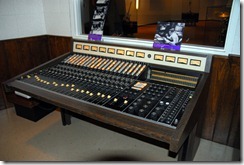

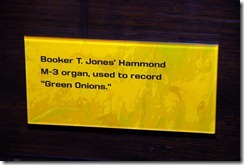

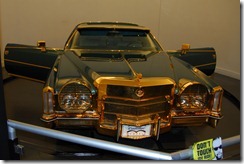
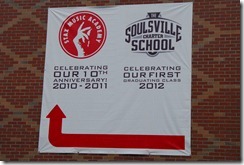



No comments:
Post a Comment